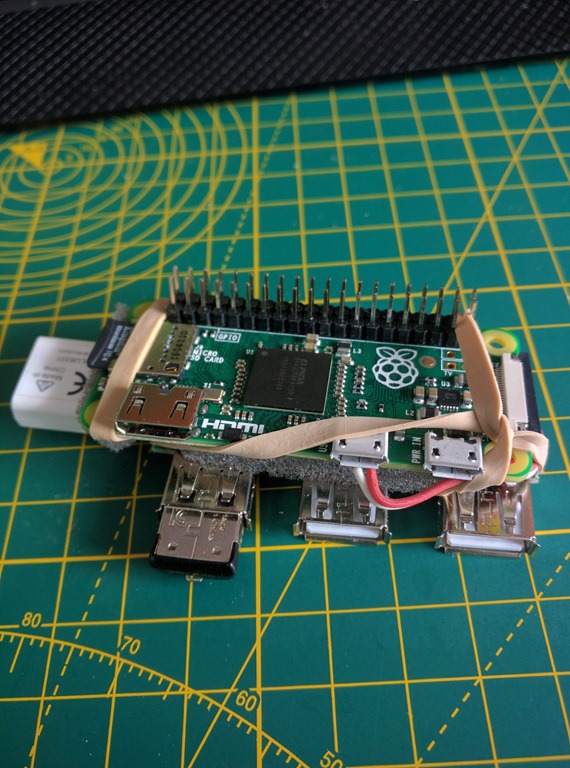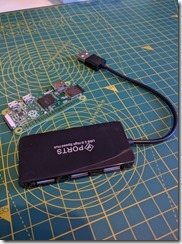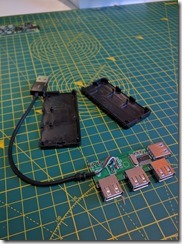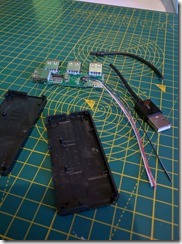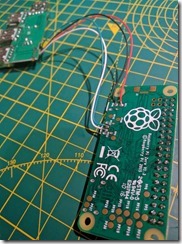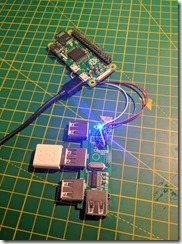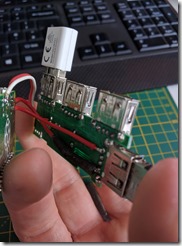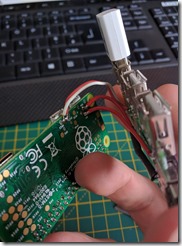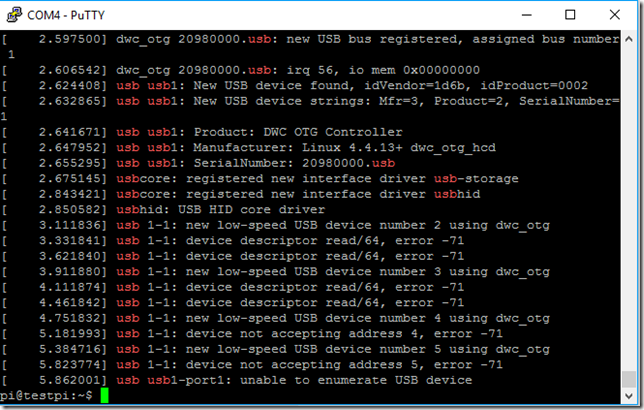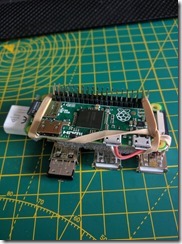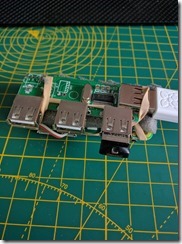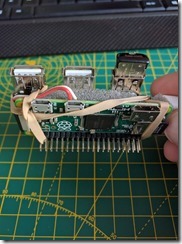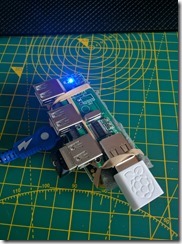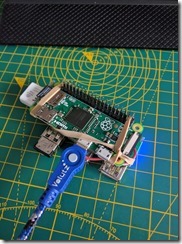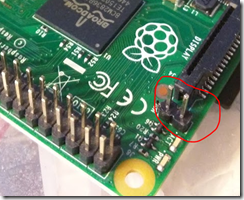As much as we all love the Pi Zero, the connectivity options are very limited. With only one (micro) USB port (for peripherals) it means you need a micro <=> ‘normal’ USB adapter to get any of the usual accessories (keyboard, Wi-Fi dongle etc.) plugged in, and when you have that’s it – nothing else can be plugged in. Also, those little USB adapters just look a little bit to precarious for my liking. So, what I needed was a ‘Raspberry Pi Zero USB Hub Hack’.
I’d seen that the USB power and data lines are presented as pads on the board itself. I wasn’t alone in noticing this, and seemingly a bunch of people had success soldering on USB hubs directly. So I though I’d give it a go. I bought myself this little ‘no name’ 4 port USB2 hub from eBay for the princely sum of £2.09 (including delivery) – how they make any profit on these is beyond me.
As soon as it arrived, I pulled the case apart exposing the board itself and cut the USB cable off. (NOTE: I probably should have tested it on the laptop, or Pi first, but I was a bit too eager).
A simple soldering job had the 4 individual cables soldered to their respective pads on the Pi Zero. It wasn’t a great success to start with, as it was ‘hit and miss’ whether it showed up on the Pi after booting.
I guessed that it was likely that not enough power was being delivered, to the hub, by the super thin cables. I decided to remove those completely and replace themwith some thicker cable to make sure there was enough power to the hub. I also used some thicker signal wire for the Data + and –.
However, now it never showed up, not even for a short time.
lsusb
It looked like it was recognising that a hub was plugged in, but it saw it as a ‘new low-speed USB device’. The seller on eBay had advertised this as a high-speed hub, so the ‘low-speed’ was odd. I would also get a lot of ‘device descriptor read/64, error -71’ errors in dmesg when the hub did not show up.
dmesg | grep usb
Googling around suggested trying out a bunch of dwc_otg settings in cmdline.txt, but none of those seemed to work. I also switched it to low speed (dwc_otg.speed=1) and that didn’t help. I knew all the connects were good and there were not shorts, so I began to think I had killed the IC on the hub somehow.
A last ditch attempt was to swap around the Data + – wires. I didn’t expect this to work as it was being ‘seen’ by the Pi, just not working. I figured, how could it ‘see’ the hub without being able to read ‘something’ from it). WRONG….
Swapping round the Data + – wires brought it to life, every time I powered on the Pi. Excellent. So now a little tidying things up, getting some anti-static foam between the boards and squishing them together with and elastic band (temporary) got me to the finish line.
lsusb
dmesg | grep usb
Here are some pictures of the finished Raspberry Pi Zero USB Hack project (although it still needs tidying and a case etc.)…
Next up is to replace one of the hub ports with a directly soldered Wi-Fi dongle. Watch this space…
